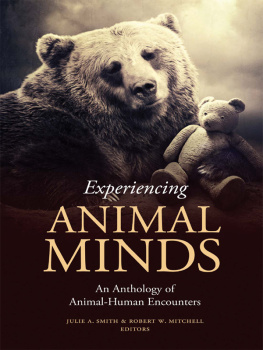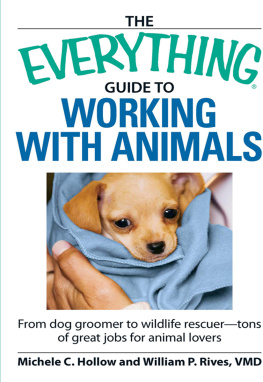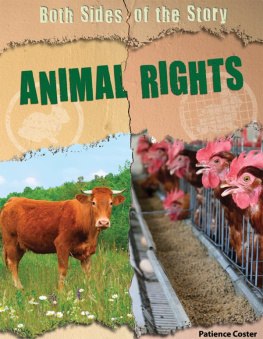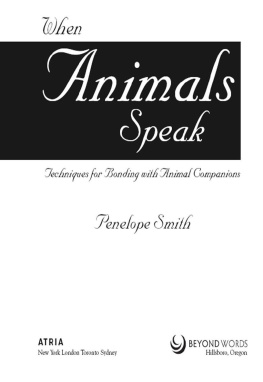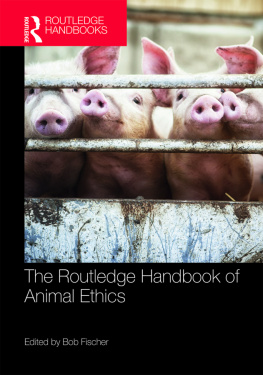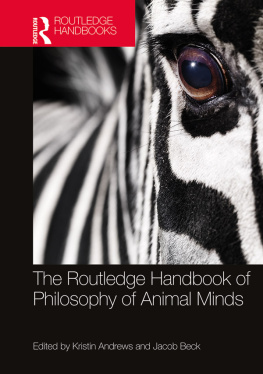Experiencing Animal Minds
Critical Perspectives on Animals
THEORY, CULTURE, SCIENCE, AND LAW
Critical Perspectives on Animals
THEORY, CULTURE, SCIENCE, AND LAW
Series editors: Gary L. Francione and Gary Steiner
The emerging interdisciplinary field of animal studies seeks to shed light on the nature of animal experience and the moral status of animals in ways that overcome the limitations of traditional approaches to animals. Recent work on animals has been characterized by an increasing recognition of the importance of crossing disciplinary boundaries and exploring the affinities as well as the differences among the approaches of fields such as philosophy, law, sociology, political theory, ethology, and literary studies to questions pertaining to animals. This recognition has brought with it an openness to a rethinking of the very terms of critical inquiry and of traditional assumptions about human being and its relationship to the animal world. The books published in this series seek to contribute to contemporary reflections on the basic terms and methods of critical inquiry, to do so by focusing on fundamental questions arising out of the relationships and confrontations between humans and nonhuman animals, and ultimately to enrich our appreciation of the nature and ethical significance of nonhuman animals by providing a forum for the interdisciplinary exploration of questions and problems that have traditionally been confined within narrowly circumscribed disciplinary boundaries.
The Animal Rights Debate: Abolition or Regulation? Gary L. Francione and Robert Garner
Animal Rights Without Liberation: Applied Ethics and Human Obligations, Alasdair Cochrane
Experiencing Animal Minds
An Anthology of Animal-Human Encounters
EDITED BY
Julie A. Smith
and Robert W. Mitchell
COLUMBIA UNIVERSITY PRESS
New York
Columbia University Press
Publishers Since 1893
New York Chichester, West Sussex
cup.columbia.edu
Copyright 2012 Columbia University Press
All rights reserved
E-ISBN 978-0-231-53076-7
Library of Congress Cataloging-in-Publication Data
Experiencing animal minds : an anthology of animal-human encounters / edited by Julie A. Smith and Robert W. Mitchell
p. cm.(Critical perspectives on animals : theory, culture, science, and law)
Includes bibliographical references and index.
ISBN 978-0-231-16150-3 (cloth : acid-free paper)ISBN 978-0-231-16151-0 (pbk. : acid-free paperISBN 978-0-231-53076-7 (e-book)
1. Animal psychology. 2. Human-animal relationships. 3. Cognition in animals. 4. Consciousness in animals. 5. Philosophy of mind. 6. Animal behavior. 7. Animal communication. Smith, Julie A. (Julie Ann), 1944 Oct. 27 II. Mitchell, Robert W., 1958
QL785.E975 2013
591.5dc23
2012012481
A Columbia University Press E-book.
CUP would be pleased to hear about your reading experience with this e-book at .
References to Internet Web sites (URLs) were accurate at the time of writing. Neither the author nor Columbia University Press is responsible for URLs that may have expired or changed since the manuscript was prepared.
Contents
One of the most well-known stories about perspective taking concerns an animal: the story about the six blind men and the elephant. The story has various incarnations, but the gist is that each blind man makes contact with a different part of an elephant and decrees that the entire elephant is understandable on the basis of the part he touches. One point of the story is that we should not make judgments based on limited information; another is that human knowledge is perspectivalwe approach things from our own limited perspectives. Importantly, the blind men in the parable do not communicate with each other or the elephant. Indeed, the elephant seems a passive object of their individualized conjecture. An objective of the current volume is to bring together many humans to touch one critical part of the elephant (and many other animals)its own point of view. Thus our focus is the minds of animals, that is, their ways of apprehending themselves, others, and the world. We also propose to exemplify the variety of methods humans might use to try to do this.
The authors in the current volume strive to explore, analyze, query, and generally poke at the perspectives of animals. Some approach from a scientific or social-scientific perspective, others from an orientation derived from the humanities: literature, art, philosophy, history, or personal experience. We present all methods as equally valid and invite readers to consider how the approaches might relate to each other. Whereas some readers may want to create an ultimate view of an animal by combining the rich set of diverse accounts offered herein, we suspect that perspectives are always to some degree independent, much as viewing the elephant from the back results in a different bit of knowing than viewing the elephant from the front. While we can combine perceptions to create knowledge of the whole elephant, we can never literally see the elephant clearly from all sides at once. In some cases we can only with difficulty hold one way of framing the subject while entertaining another. Still the attempt can be fun and informative.
Part 1: Living with Animals
Living with animals provides experiences with and knowledge of animals that are less likely to arise in other contexts where our relationship with animals may be less salient to us. Not only do we look at animals we live with, and they at us, but we each touch and smell and otherwise sense each other and also develop expectations about each other. Living and interacting with animals toward whom we feel affection heightens awareness of their fears, passions, needs, and interest in social involvement. We experience these animals as intentional agents with minds of their own; we collect anecdotes that point to the animals capacities for companionability. Some of us come from long and rich experience with a single species. Davis has devoted her life to providing a sanctuary for chickens, those much maligned creatures viewed by most humans as so mentally vacuous that they are entitled to exploit them on a staggering scale. In Daviss presentation, one is clearly aware of her belief in a fundamental nature of chickens that calls the ethics of current human practices into question: their capacity for reciprocal relations. Davis lives with chickens as mutual agents who initiate contact and response. Less interested in precise calculations in an economy of exchange, Davis rather insists on a general idea of give and take as the definition of meaningful relationships.
Acutely attentive to the influence of representations of pets on our experiences of them, Schlosser is also interested in human-animal reciprocity. She describes how selected artists involve pets in the processes of making art in order to understand better their subjectivity and agency. Narrowing the field of exploration to artworks that examine touch-contact, Schlosser shows how these works offer complex understandings of the meaning of touch as a medium of exchange between animal and human participants as well as between them and the viewers of artworks. She locates her own work within this paradigm. Thus, while Davis explores reciprocity laterally, through one human life extended through time with one species, communicating her views through descriptions of episodes of mutuality, Schlosser proceeds vertically. She focuses on one kind of event within the domestic partnership and explores its rich variations as captured by a group of artists all intent on referencing its meanings. For both Davis and Schlosser, however, the domestic arrangement provides a space for interactions that will lead to insights about animal minds less likely to occur in other contexts.

